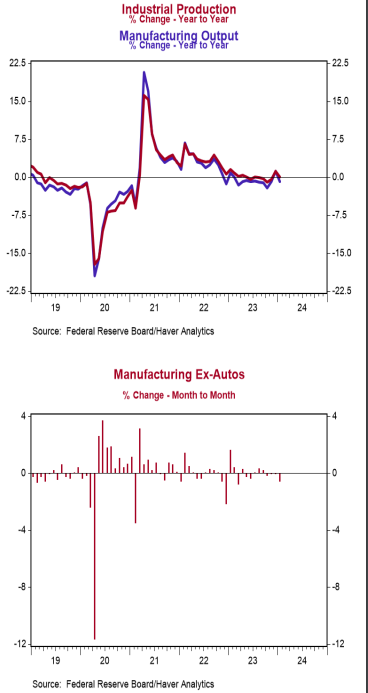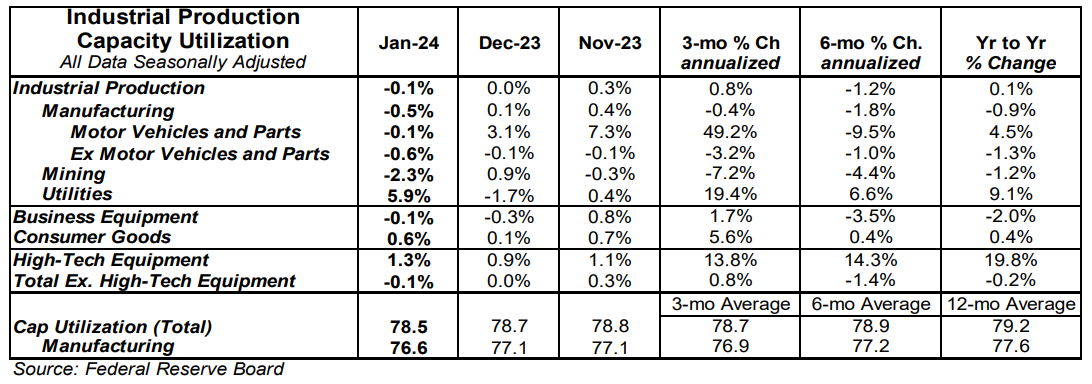- Industrial production declined 0.1% in January (+0.1% including revisions to prior months) versus a consensus expected gain of 0.2%. Utilities output rose 5.9% in January, while mining fell 2.3%.
- Manufacturing, which excludes mining/utilities, dropped 0.5% in January (-0.4% including revisions to prior months). Auto production declined 0.1%, while non-auto manufacturing fell 0.6%. Auto production is up 4.5% in the past year, while non-auto manufacturing is down 1.3%.
- The production of high-tech equipment rose 1.3% in January and is up 19.8% versus a year ago.
- Overall capacity utilization declined to 78.5% in January from 78.7% in December. Manufacturing capacity utilization fell to 76.6% in January from 77.1%.
Implications: Industrial production started 2024 off on a weak note, declining 0.1% in January. Notably, the Federal Reserve highlighted that worse than expected winter weather had big impacts on the January data. Looking at the details, the manufacturing sector was the biggest weak spot in today’s report, dropping 0.5%, largely driven by non-auto manufacturing, which we think of as a “core” version of industrial production and which fell 0.6%. Meanwhile, auto production declined 0.1% as well. The brightest manufacturing news in the report was that the production of high-tech equipment rose 1.3% in January and is up 19.8% in the past year, by far the strongest growth of any major category. This likely reflects investment in AI as well as the reshoring of semiconductor production, which remains temporarily strong due to the CHIPS Act, despite broader weakness in the industrial sector. The mining sector also fell in January, dropping 2.3%, the largest monthly decline since 2021. Broad-based weakness in oil and gas extraction, mineral extraction, and the drilling of new wells all contributed. Finally, the utilities sector (which is volatile and largely dependent on weather), posted a gain of 5.9% in January as unusually cold weather drove a surge in demand for home heating. In other manufacturing news this morning, the Philadelphia Fed Index, a measure of factory sentiment in that region, rose to +5.2 in February from -10.6 in January. Meanwhile, the Empire State Index, its counterpart for the New York region also rebounded, rising to -2.4 in February from -43.7 in January. Finally in housing news, the NAHB Housing Index, a measure of homebuilder sentiment, rose to 48 in February from 44 in January. This is the third gain in a row and coincides with the recent moderation in mortgage rates as markets begin to anticipate rate cuts from the Federal Reserve in 2024. That said, a reading below 50 signals that a greater number of builders view conditions as poor versus good.





